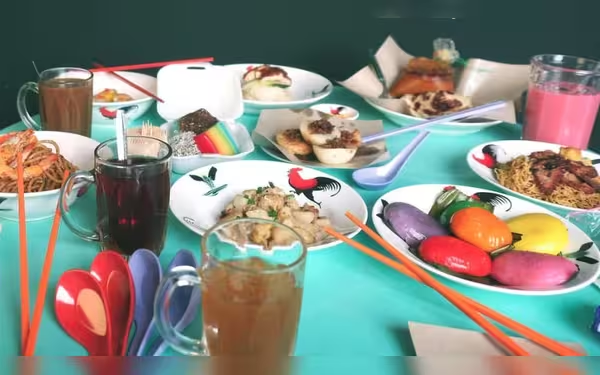Thursday, November 7, 2024 12:52 PM
Decline of Traditional Singaporean Cuisine: A Culinary Reflection
- Nostalgia for traditional flavors is fading.
- Quality of iconic dishes is declining.
- Preservation of culinary heritage is essential.
 Image Credits: channelnewsasia
Image Credits: channelnewsasiaThe decline in quality of traditional Singaporean dishes raises concerns about culinary heritage and nostalgia.
In recent years, the culinary landscape of Singapore has been a topic of much discussion among food enthusiasts and casual diners alike. The vibrant food scene, once celebrated for its rich flavors and traditional recipes, seems to be undergoing a transformation that leaves many questioning the quality of their beloved dishes. This sentiment was poignantly captured during a recent visit to a long-standing kueh shop, which is set to close its doors after decades of service to the community.
On the final day of operations, the atmosphere was charged with nostalgia and anticipation. Early in the morning, eager customers formed a long queue outside the shop, ready to indulge in the sweet and savory delights that had become a staple in their lives. However, as the day unfolded, the experience turned from excitement to disappointment. The once-celebrated otak-otak, a dish known for its custardy texture and aromatic flavors, was found to be dense and lacking in taste. Instead of the expected burst of fish and spices, it resembled a bland fish cake, leaving a sour note on the palate.
Similarly, the kueh dadar, a rolled dessert filled with coconut, failed to impress. The filling was so dry that it felt as if it had been made with desiccated coconut rather than the fresh, moist variety that one would hope for. The ang ku kueh, another traditional favorite, had a thick skin that felt coarse and uninviting, especially when compared to the delicate, thin-skinned versions made by family members in the past. Even the steamed kueh lapis, a dish that usually fills the air with the fragrant aroma of pandan, was devoid of its signature scent, leaving a sense of loss among those who cherished it.
As the disappointment settled in, a conversation with a family member revealed a broader concern about the state of commercial food standards. The response was a reminder that many have felt this way for years, suggesting that the decline in quality is not merely a figment of nostalgia but a reality that has been creeping into the culinary scene. This raises an important question: Are we witnessing a genuine decline in the quality of traditional foods, or is it simply a matter of changing tastes and expectations?
Reflecting on this experience, it becomes clear that food is not just about sustenance; it is deeply intertwined with memories, culture, and identity. The flavors we grew up with shape our understanding of comfort and home. As we navigate through a rapidly changing food landscape, it is essential to advocate for the preservation of traditional recipes and cooking methods. While modernization and convenience have their place, they should not come at the expense of the rich culinary heritage that defines a community. In the end, the question remains: How can we ensure that the future of Singaporean cuisine honors its past while embracing innovation?













